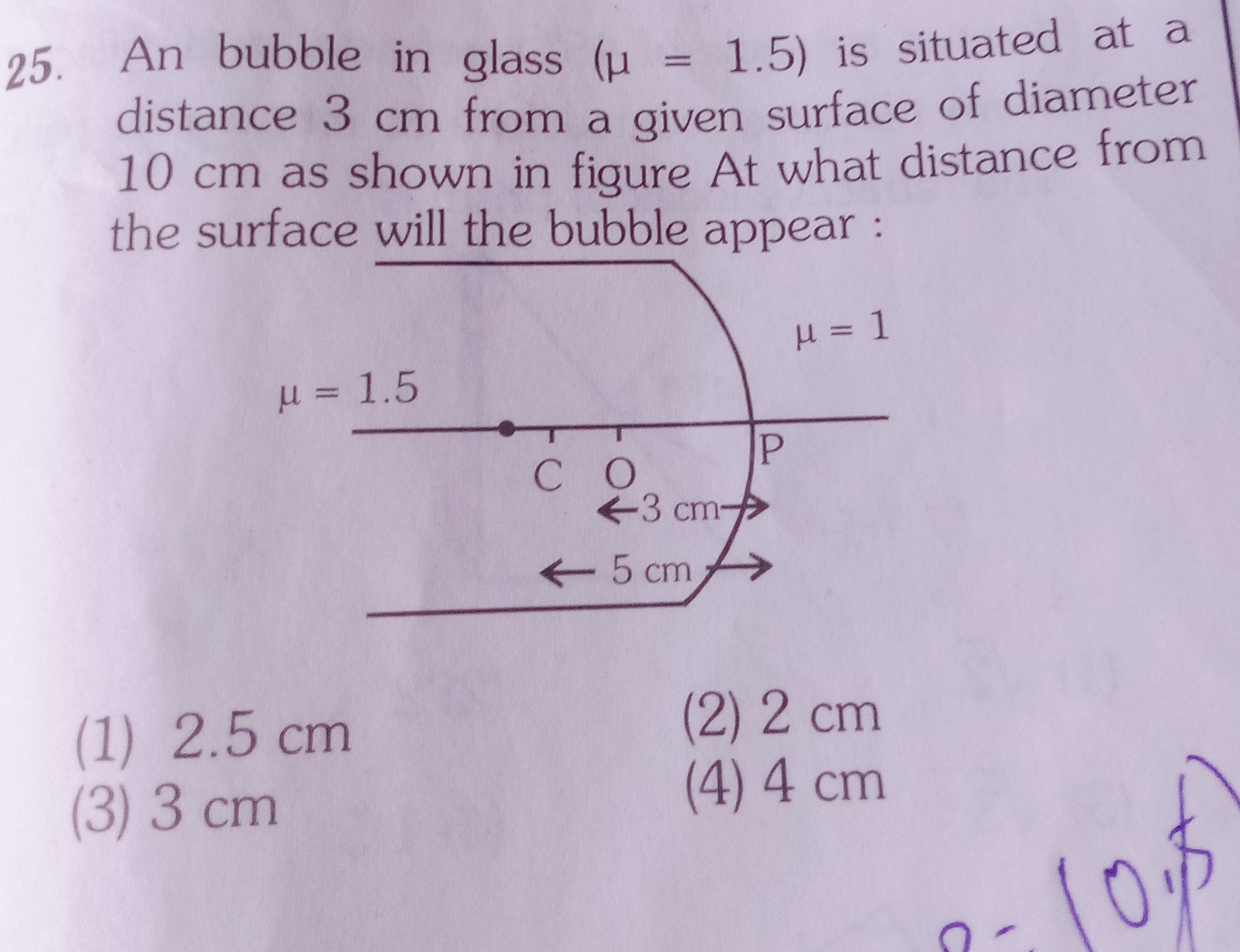Question
Question: An bubble in glass ($\mu$ = 1.5) is situated at a distance 3 cm from a given surface of diameter 10 ...
An bubble in glass (μ = 1.5) is situated at a distance 3 cm from a given surface of diameter 10 cm as shown in figure At what distance from the surface will the bubble appear :

2.5 cm
3 cm
2 cm
4 cm
2.5 cm
Solution
The problem involves refraction at a spherical surface. We are given a bubble in glass, which acts as the object. The bubble is located inside glass of refractive index μ1=1.5. The observer is in air, so the refractive index of the medium into which light is refracted is μ2=1. The bubble is situated at a distance of 3 cm from the pole of the refracting surface. The refracting surface is part of a sphere with a diameter of 10 cm, which means its radius of curvature is R=10/2=5 cm.
From the figure, the center of curvature C is to the left of the pole P, and the object O is between C and P. The distance from the object O to the pole P is given as 3 cm. Using the sign convention where distances to the left of the pole are negative and distances to the right are positive, the object distance is u=−3 cm. Since the center of curvature C is to the left of the pole P, the radius of curvature is negative, R=−5 cm.
The formula for refraction at a spherical surface is: vμ2−uμ1=Rμ2−μ1 where: μ1 = refractive index of the medium of the object (glass) = 1.5 μ2 = refractive index of the medium of the image (air) = 1 u = object distance from the pole = -3 cm R = radius of curvature = -5 cm v = image distance from the pole
Substituting the values into the formula: v1−−31.5=−51−1.5 v1+31.5=−5−0.5 v1+0.5=0.1 Now, solve for v1: v1=0.1−0.5 v1=−0.4 v=−0.41 v=−410 v=−2.5 cm The negative sign for v indicates that the image is formed on the same side as the object, i.e., to the left of the pole P. The question asks for the distance from the surface, which is the magnitude of v. Apparent distance = ∣v∣=∣−2.5 cm∣=2.5 cm.
The bubble will appear at a distance of 2.5 cm from the surface.
